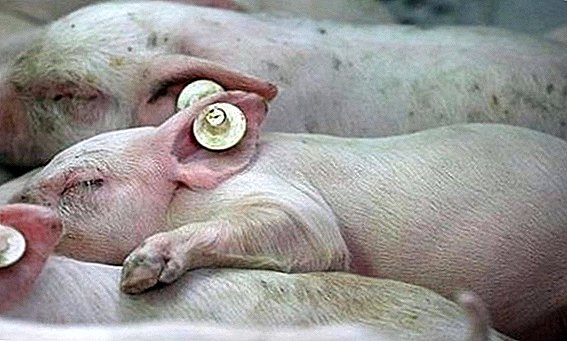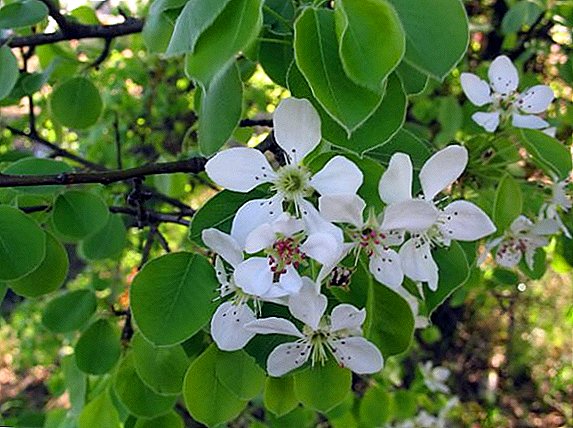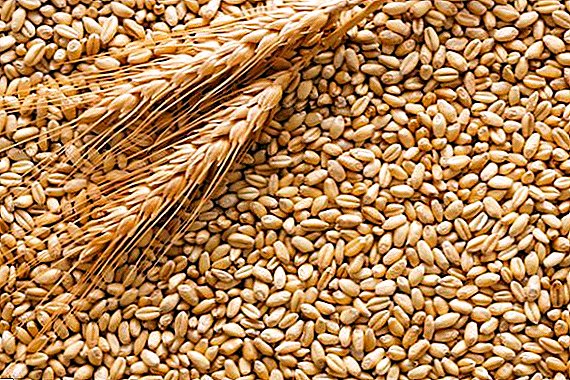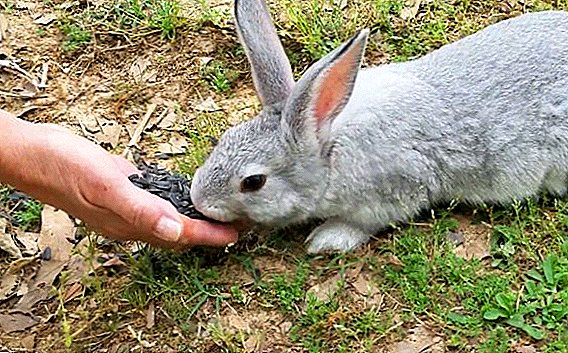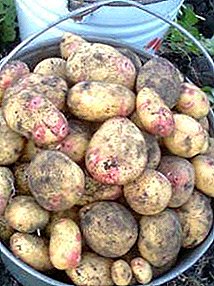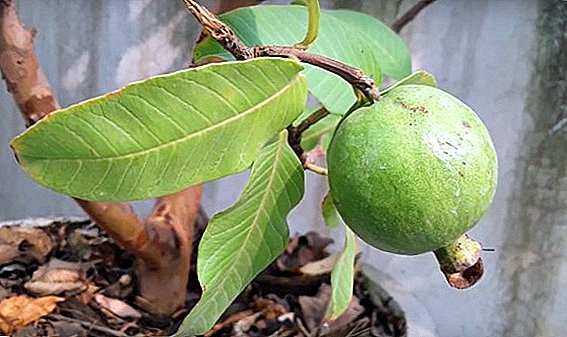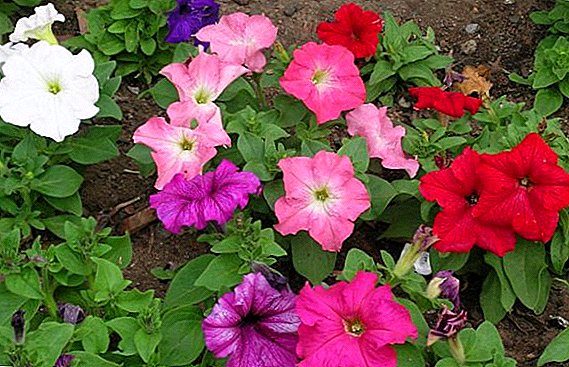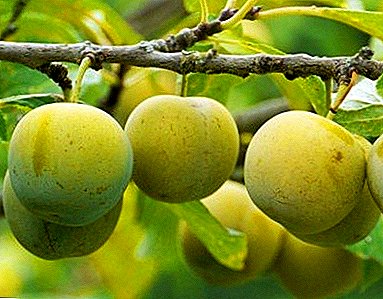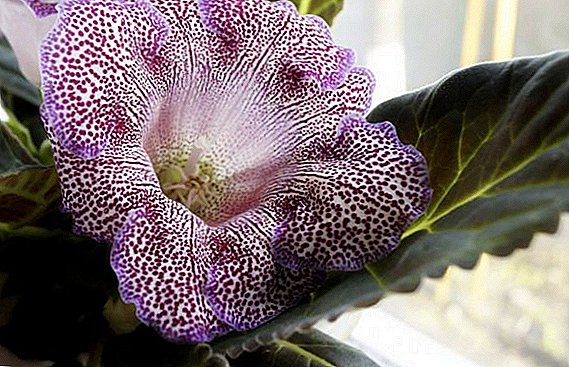 Gloxinia is considered a relatively young culture in Europe, since only 3 centuries ago it was brought here.
Gloxinia is considered a relatively young culture in Europe, since only 3 centuries ago it was brought here.
The flower quickly gained popularity and the desire to breed it at home. On the methods of reproduction of this plant and will be discussed in the article.
Basic rules for growing gloxinia
The placement of gloxinia or syringium (second name) depends on the season and the phase of its development. In the spring, it is still cool and the sun is not very active, the plant is quite comfortable on the south side of the house. At the same time, it increases the green mass and prepares for the laying of buds, so it needs bright lighting. In early spring, while the light day is still short, the flower is illuminated so that the day lasts up to 12-14 hours.
During the flowering period, the brightness of the light should be muted. Too long, bright light reduces the flowering time.  The temperature of the content is optimal in the range of + 20 ... + 26 ° С, the temperature is considered to be below + 18 ° С or above + 28 ° С. The plant prefers high humidity in the range of 60-80%.
The temperature of the content is optimal in the range of + 20 ... + 26 ° С, the temperature is considered to be below + 18 ° С or above + 28 ° С. The plant prefers high humidity in the range of 60-80%.
The method of irrigation is recommended to lower through the pan or irrigation of the soil along the edge of the pot so that moisture does not get on the stems or leaves. The water temperature should be 2-3 degrees lower than the air temperature, the quality - filtered or at least separated by day. After watering the remaining liquid from the pan is drained. The frequency of irrigation depends on the rate of drying of the soil coma: you need to water almost dry soil.
Fertilizers begin to carry out 2 months after planting, fertilizers should not fall on the root neck, stems or foliage. Fertilize a bush with an interval of 14 days, after watering, alternating mineral compositions and organic matter. During the growing season, as the organic matter, you can use the infusion of bird droppings. Concentrated solution (0.5 kg / 12 l), insisted 3-4 days, diluted with water for irrigation in a ratio of 1 l / 1.5 l of concentrate. Of the mineral complexes apply ammonium nitrate (1.5 g / 1 l).
During the flowering period, wood ash (1 tablespoon l / 1 l of water) is alternated with superphosphate (1.5 g / 1 l). After flowering, potassium-phosphorus composition is used to restore strength, for example, potassium monophosphate (2 g / 1 l of water).  In late September, they begin to reduce watering, preparing the flower for a rest period, which lasts from October to February. After the cessation of watering, the green parts of the gloxinia will die off, and the tuber will need to be removed from the pot. It is placed in storage in wet sand and stored at a temperature of + 10 ... + 15 ° С.
In late September, they begin to reduce watering, preparing the flower for a rest period, which lasts from October to February. After the cessation of watering, the green parts of the gloxinia will die off, and the tuber will need to be removed from the pot. It is placed in storage in wet sand and stored at a temperature of + 10 ... + 15 ° С.
Did you know? King of Sweden Charles II introduced a peculiar adverb among the European nobility - "language of flowers". A bouquet of gloxinia as a gift in this language meant a declaration of love at first sight.
Methods for plant reproduction at home
Gloxinia reproduces well in both seed and vegetative ways, but not all methods are good for every species. We will tell about it in detail below.
Leaf cuttings
This is one of the most reliable ways to propagate a flower, and it doesn't matter if a whole leaf or its fragment is used. A young leaf with a short stem, up to 3 cm, is taken as a cutting. Rooting technology:
- In a plastic cup in a moist soil placed a sheet to a depth of 1 cm.
- The container is covered with a film and placed in a lit place.
- The film is removed in a month, during which time roots appear.
- After 2 months, the sheet forms several "kids." At this time, it is cut, and the seedling with the "children" is placed in an individual pot.
 Often in the leaf axils there are stepchildren who take away from the bush for their development a lot of strength and nutrition to the detriment of flowering. It is recommended to remove such sprouts, but you should not throw them away, it is better to use for reproduction. The breeding pattern of stepsons is similar to the previous method.
Often in the leaf axils there are stepchildren who take away from the bush for their development a lot of strength and nutrition to the detriment of flowering. It is recommended to remove such sprouts, but you should not throw them away, it is better to use for reproduction. The breeding pattern of stepsons is similar to the previous method.Seeds
Seeds can be purchased at a special store or collected independently. Before sowing, the material should be soaked in Fitosporin-M for 2 hours, the proportions for preparing an aqueous solution of the powder form - 1.5 g / 100 ml of water.  The sequence of actions when sowing is as follows:
The sequence of actions when sowing is as follows:
- Fill the planting container with decontaminated soil.
- The seeds are mixed with sand and spread over the surface.
- Carefully, in order not to wash out the seeds, the soil is moistened with a sprayer.
- The container is covered with glass or plastic film and placed in a lighted place.
- Germination temperature should be + 25 ° С.
- Crops are regularly aired and, if necessary, sprayed with water.
- Shoots appear within a month.
Important! The first flowers (they appear after 9 months) must be cut off: the plant is not yet sufficiently strong for flowering.
Tuber division
After the rest period, the tubers are removed from storage. For reproduction by division, tubers are inspected for rot or other diseases, cleaned of dry roots. Next steps:
- Soak the material in fungicide (Fitosporin-M: 10 g / 0.5 l of water, for 30 minutes).
- Plant in a small container with a primer for the appearance of leaves. Plant in the soil need eyes up.
- When 4-5 strong leaves appear, the tuber is divided, leaving a pair of green leaves on each half.
- Lower the halves into a fungicide, then dry and sprinkle with a cut with crushed coal.
- Plant delenki in prepared pots filled with soil.
- Water the next day.
Video: Gloxinia reproduction by tuber division
Peduncle
Faded flower stalks are also suitable as planting material. Rooting scheme:
- The dried bud is removed, the pedicel is cut at an angle.
- The germination of the roots is carried out in water. Warm filtered or distilled water is poured into a transparent container 1 cm deep.
- To prevent rotting of the lower part of the stem, dissolve 1 tablet of activated carbon in water.
- Regularly as the evaporation water is poured to remain the same level.
- The container is placed in a bright place.
- In a month, peduncles will grow roots, then, after about 15-20 days, leaves and small tubers will appear.
- At this time, the seedling is transferred to a pot filled with soil.
Important! The method is not suitable for terry varieties of syringium, most often the stems of peduncles rot.
Tops
Apical cuttings are a good alternative, when for some reason the plant is very stretched or it is no longer young, the tuber needs rest. The cutting is cut at an angle of 2 cm above the tuber. Rooting technology:
Rooting technology:
- The length of the cutting is about 3 cm, the lower leaves are carefully removed so that they do not take away strength.
- The clear water is poured into a transparent container 2 cm deep, dissolving a tablet of activated carbon in it.
- The stem is placed in water and covered with a film.
- Rooting is placed in heat and under bright lighting.
- Regularly air the seedling, pour water if necessary.
- After the appearance of sprouts transplanted into the ground.
Features breeding gloxinia
Given the many ways of breeding syringes, they can be used at different times of the year. Although the most optimal period is considered the end of spring and summer. At this time, after a winter rest, the plant has enough strength for reproduction, in the first months of spring it has time to recover. For each of the methods described above, one season or another is suitable.
The cuttings by the tops for room flowers can be carried out at any time of the year, if it is possible to ensure the temperature of the content at the level of + 20 ... + 25 ° С 
In spring and summer
In early spring, propagate with a tuber, germinating it immediately after a period of rest. Reproduction by leaf and stepchildren is carried out in late spring or early summer.
Autumn and winter
Flowering in gloxinia with proper care can last from March to September. Peduncles as planting material used in the fall. Sowing flowers is recommended to transfer to early January or the last decade of February.
Learn how to care for gloxinia after flowering.
Preparing for a flower transplant
Gloxinia loves loose soil with good carrying capacity and acidity values of 5.5-6.5 pH. The composition of the soil should be in a ratio of 1: 1: 0.5:
- high peat;
- leaf earth;
- sand.
 The material of the pot does not matter much, the size for young rooted seedlings should be about 10 cm. The container should be wide in volume. As a drainage material they use everything that is at hand:
The material of the pot does not matter much, the size for young rooted seedlings should be about 10 cm. The container should be wide in volume. As a drainage material they use everything that is at hand:- pieces of foam;
- pebbles;
- gravel.
Further care
To grow gloxinia successfully and observe its lush flowering, it is not enough to follow the rules of cultivation and care.
Check out terry gloxinia varieties.
A few secrets from experienced flower growers will help you in this matter:
- During the germination of roots in seedlings, the temperature is raised to + 25 ° C. After rooting with the onset of active development of green mass, the plant is kept in such a temperature mode: in the daytime - + 22 ° С, at night - + 18 ° С. Such a technique will allow the bush to form correctly without pulling the shoots.
- After the rooting of the tuber, when sprouts with leaves appear, the flower will need bright light. Then the stems will be shorter, the squat bush, and the buds will be tied up more. In addition, bright lighting at this stage will give a bright color to the petals in the future.
- Despite the love of the plant for high humidity, it is undesirable to spray Gloxinia, it is better to place a container with wet filling (moss, expanded clay) next to it.
- When watering necessarily monitor the uniform distribution of water throughout the soil. Since gloxinia roots are located superficially, overflowing in one place will provoke rot, and underfilling in another place - drying out.
- To make the flower grow compact and beautiful, the pot is regularly turned around its axis.
- In order to sinningia bloomed twice a season, after the first flowering period, the stem is pruned to 2-3 lower leaves. After the appearance of the stepsons, they are also removed, leaving a few promising, and the bush is fed with complex fertilizers for active growth and flowering.
Did you know? The second name of the flower Sinningia did not stick among the gardeners. That's because the first syllable in the name Gloxinia - "Glock" - from German translated as "bell"whose shape follows the inflorescence of the plant.
Possible breeding difficulties
Difficulties in breeding gloxinis can arise both at the stage of germination and at the stage of rooting, therefore it is important to know not only how to plant, but also what method to choose. The main problems of reproduction:
- When sprouting, the roots do not appear for a long time - the cutting is deeply set, the soil during germination is excessively moistened.
- A tuber was not formed - a stalk with a long stem was taken for reproduction.
- The rotting of the planting material is a non-sterile instrument, water of poor quality (rooting in the water), a lack of light, too high a temperature, the absence of disinfection of sections, a diseased planting material.
- Sapling rot can be caused by an incorrect breeding method for a particular variety.

In the process of growing gloxinia, you can encounter some diseases and pests that attack the flower. Methods of dealing with them are presented below:
- Root rot - effective watering drug "Diskor" (solution in a ratio of 1 ml / 2 l of water).
- Late blight - apply watering with an aqueous solution of the drug "Alirin-B" in a proportion of 0.25 tablets / 1.5 l.
- Fusarium - carry out irrigation of the soil with the drug "Vitaros" in the proportion of 2 ml / 1 l of water.
- Thrips - effective is the drug "Actellic". For spraying, prepare the solution in a ratio of 2 ml / 2 l of water.
- Spider mite - You can destroy the pest by spraying the drug "Agravertin" (2 ml / 1 l of water).



